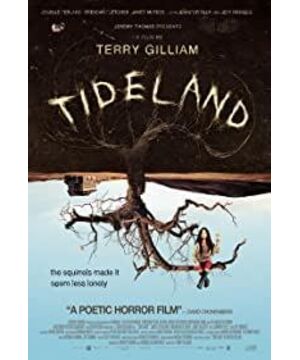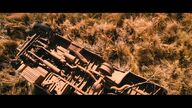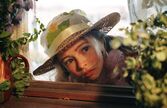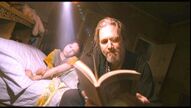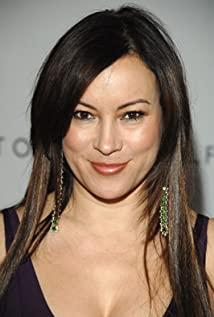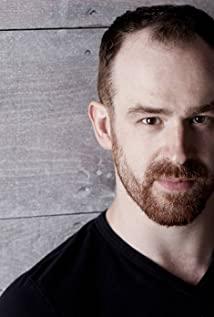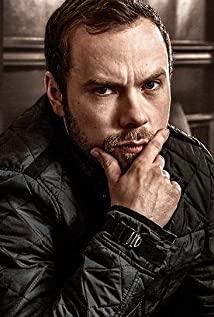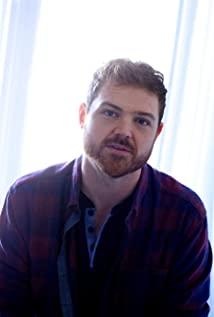Gilliam seems to have found the carrier of truth in this psychedelic parallel world. Hallucinogenic drugs and ecstasy have become his sunny avenue to utopia. There is no end to this road, or death, but it's a wonderful way to escape the frustrations of the real world. "Escape" is a key word in almost all of Gilliam's films. In the 2005 film Rising Tide Shore, Gilliam continued to escape in a psychedelic world that paralleled the real world, this time in a gothic horror. Although Gothic horror literature is inconspicuous in the history of literature, it has a very striking stroke. It is a branch of romantic literature. It dates back to British author Horace Walpole's 1764 novel "Castle of Otranto": a bizarre blend of traditional love stories, murder, ghosts, imprisonment, horror, living statues And novels with various elements such as unbridled sentimentalism. Representative works of this literature also include Mary Shelley's Frankenstein, Louis Stevenson's Doctor Who, Bram Stoker's Dracula, and even Hitch Kirk's Psycho also counts. As an important branch of romanticism, Gothic horror novels in the 18th and 19th centuries were mainly the embodiment of individualistic resistance. Realistic ethics and morality are not allowed. Also, it's called "Gothic" because the protagonists of these stories are often "retro", or ancient monsters, or the undead of ancient families - when history, in the form of undead and zombies, tries to make a fuss about modern life. When taking control, terror emerges. Therefore, it is not difficult to see the critical reality of Gothic horror literature: the industrial civilization of the Victorian era has caused harm to the emotional world of individuals, and the ruthless big machine has disenchanted and formatted the colorful emotional world. It is precisely these repressed emotions, the disenchanted mystery, and the pre-modern passions that Gothic literature awakens. It uses a pair of terrorist hands from history to try to subvert the rationality and optimism of industrial civilization. It is based on extreme individualism to vent emotions, expose the hypocrisy of society, and realize the reaction of life. These value demands coincide with Gilliam's spiritual world, and the various distorted horror atmospheres provide a broad stage for Gilliam's comic-style design. Although Gothic literature originated in Britain and Europe, as a dark "exotic" opposed to industrial civilization, the United States also has a literary tradition of this style. In the American version of the Gothic novel, the dark "exotic" is concentrated in the southern part of the United States, that is, the southern fields opposite to the northern industrial civilization: in the southern tradition dominated by agricultural planting, these vast southern fields concentrate the unenlightened Mysterious, terrifying, ancient passions infiltrated by civilization. Therefore, American Gothic novels mostly take the south as the place where the story takes place, and find a lot of material in the southern civilization. The film takes place in the prairie of the southern United States, and the prairie scene contrasts sharply with the urban scene of Los Angeles. Los Angeles represents the decadent side of American civilization, and the southern countryside to which Noah and his daughter "escaped" Los Angeles is a vast and bright paradise, a place where various Gothic elements are carried. The movie begins with Ruth's monologue of the "rabbit hole" story of "Alice in Wonderland". Like Gilliam's previous movies, it opens with a "head" - falling into the rabbit hole symbolizes escaping the depression and suffering of real life. . Then fireflies appeared in the water-like sky. "Firefly" appears at the beginning and end of the film, forming an end-to-end echo, but only twice, it is a poetic symbol of hope. And the design of the blue of the water to the golden yellow of reality shows the connection between the two worlds of reality and surreal at the beginning: this is the core of the film. Alice has been sinking down the rabbit hole, and the "sinking" is exactly the real situation of each character in the film: everyone has been "sinking" in their own twisted world. It can be said that the theme of the story line of this film is Ruth's journey to find her mother. When the narrative moves into the home environment of Ruth's biological parents, we find the tension between her father and mother evident: her mother is a depressed, drug-dependent hopeless man, while her father is full of adventures of romance - even though both are drug addicts. In the medicine, the mother can only show more despair of reality, while the father holds "Alice" and enters a utopian creative realm. In the face of the romanticism of the father, the mother will only show contempt. From Ruth's retro dress, it is not difficult to see that Ruth's fantasy world is completely influenced by this romantic father: she said "final destination" to her father while mixing medicine, and when she rubbed her mother's legs, Her mother's depression disgusted her. Although both her parents eventually died of drugs, they were two completely different deaths: the mother did not have the ability to "escape", and her death was a pure reality, which also showed that Gilliam was uninjured by this kind of death. The attitude of the depressed person of world ability; and the father has a "creation" ability, which is a very great ability: he is not depressed, no matter how hard the reality is, he is always ready to enter the romantic wonderland. Home Gesture - The name "Noah" has it all. When the suffering of the whole world hit this family and his daughter, it was the ark of this "Wonderland world" he created to protect his daughter, he died, but his world would never die - his large and strange It's no coincidence that the clothes, long hair and beard are a replica of Gilliam's face, who gave Noah his soul. The shadow Ruth sees on the bedroom wall the night her mother died is the first appearance of the film's gothic style. The light in the scene where the mother died is very strange: the spherical crystal lamp above the corpse creates a feeling of fireflies flying all over the sky. The light is also warm red, and the horror is mixed with a kind of romance. The next road scene is still the sense of freedom in "Terror". And the appearance of rural Texas, the panoramic lens creates a very different feeling from Los Angeles: if the home of Los Angeles is hell, then this is paradise. This transition symbolizes the protagonist's transition from confinement to freedom, but it is also a transition from the known to the unknown. Then there are four important characters on the scene: that is, Ruth's four doll heads. Ruth's death scene in front of the mirror caters to the story style often seen in gothic novels, in which a person is controlled by different inner personalities at different times, thus showing diametrically opposed personalities, such as Doctor Who and Frankenstein. But the people in the gothic novels are not controlled by the main character when the personality splits, and although Ruth plays different personalities, it is controlled by a rational main character, she is conscious, not really split It's just "exploring" the diversity of personality. Whether it is the four doll heads or the squirrel that seems to be human, they are all projections of Ruth's multiple personalities. And she repeatedly performed near-death episodes in front of the mirror, which showed her fascination with death, which is also the theme of the film: the "things of death" of various appearances tightly wrapped the little girl, and her suffering was impossible Break through these "things of death" packages, and her only and great escape is to use an imaginary fairy tale world to explain the real world - don't forget it's a gift from her father. But Ruth is stronger than his father in this: although her father found a fairy tale world, but he did not have the ability to use this fairy tale world to "explore", Noah could only escape in heroin, that's all He's no different from Ruth's mother. Only Ruth can freely use this fairy tale world to "explore" the real world, which is completely different from her father's "escape", which contains constructive creation. Again, "escape" has always been the key word in all of Gilliam's films, but the "escape" in this film is different from -- for example -- Laurie's escape in "Brazil": the world of "Brazil" is us A metamorphosis of the bureaucracy of reality, Laurie's escape is closely tied to the daily life of our audience; but Ruth's escape from the fairy tale world is purely her personal adventure, or Gilliam's rise from social criticism to A mysterious exploration of the depths of individual life. The squirrel that Ruth saw on the roof is also an important role. This squirrel is like the rabbit in "Alice", which leads Ruth down the "rabbit hole". During the expedition, Ruth discovered her grandmother's clothes, which was an important "death thing", and her wearing this dress represented her official entry into the death family and became a member of it. Her grandmother's clothes lead her into the free realm of the Gothic kingdom. When Ruth put on the wig and performed the second performance in front of the mirror, it is not difficult to compare with the first time before: the first time she played a dying person, but this time she suddenly played the dying person , suddenly playing the undead, and having a dialogue with the doll-headed Mustin. The undead theme of the gothic novel officially entered the film and entered Ruth's body. The father's corpse is also very interesting: when Ruth took off her father's sunglasses for the first time, the eyes of the deceased father were not as terrifying as the dead mother's dead eyes, but half-squinted, showing a very vague feeling. It was in response to Noah's extremely beautiful words before he went into a coma when he set off to the dream high tide coast. Recalling the previous scenes: Ruth's mother's death was a "violent death", but Noah died very happily. He finally left in his hometown. This is the final result of God's utopian romanticism. of consolation. After the death of Ruth's mother, Noah did not feel sad, but showed excitement. It was a sense of excitement that he was about to leave. He took Ruth to "escape" Los Angeles, where he was imprisoned, and returned to his hometown. The majesty of the lens says it all. Maybe Noah knew that his end was coming. When he entered the house and strummed the piano, he showed a moment of complexity. He saw that the hometown was in ruins and no longer existed. Maybe at that moment he I knew that my life of failure was about to embark on the road to the high tide coast here. So the next last injection, regardless of the light or Noah's performance, was both weird and warm. Noah slowly said the beautiful picture of the high tide coast and fell asleep unknowingly. So Noah's corpse is not scary even if it rots. Instead, it forms a very harmonious relationship with the old house, as if he is a piece of rotten furniture in the old house. The more rotten he is, the more part of the old house. . Noah was integrated into his own Gothic family in this way. So whether Ruth lay on Noah's corpse or dressed up the corpse with a wig, it doesn't look scary, but it has a bit of comic humor. At this time, Noah was already just a piece of furniture in the old house. Dale's first appearance was a spit outside the old house: an interesting detail. The whole story is Ruth's first-person narrative, only a small outside perspective is inserted here. Dale is also a child in a way. She lives in her own world of the dead, isolated from the rest of the world. The only emotional support is her younger brother Di Qin. Dyer is the stubborn defender of the Goth family. When she tells Ruth about revenge on her mother when she was young, the film's treatment has a very interesting detail: at the end of the story, the original novel is "Mother's heart stopped and she couldn't finish the meal"; but the film It was changed to "Mother's heart stopped, we can't eat her apple pie anymore". The sadness of a child who has lost a mother is presented. This change reinforces the theme of the film once again: the lack of maternal love for everyone. Like Ruth's childhood, Dale also experienced a twisted and perverted "mother's love". Later we know that Noah is Dale's brother, and Dale has a lust for her brother since childhood, which is again a common incest theme in Gothic novels. But in the face of "death", Dyer is fundamentally different from Noah: Noah's romanticism is a mockery of death. He lives on the edge of death every day, but he is immersed in his yearning for fantasy adventures all the time; Dyer's Taking death as her sanctuary, making specimens is an eternal possession of "things of the dead", and maintaining the order and strength of the dead is her only career - she is a child who is tightly bound by her own devil. She is hostile and wary of everything alive around her. The next most imaginative role appeared, that is Di Qin. As the leader and emotional support of Ruth's fairy tale world, Di Qin successfully succeeded Noah. Di Qin appeared in the image of an epilepsy patient, but this person was wearing diving equipment, and the two naturally entered the performance. Ruth found her father's romanticism in Di Qin. Di Qin's "submarine" and his dream of diving to kill sharks is a continuation of her father's fairy tale. Di Qin is now the person least bound by the suffering of reality. Under the guidance of Di Qin, the fantasy scene of the film's first large paragraph appeared: everything was immersed in the blue water, which represented hope. Di Qin took over Noah's mission and once again served Lulu Silk opens the door to Utopia. But where does this door lead? When Ruth played with Di Qin for the second time, Di Qin put a few lipsticks on the rails as "bait". Di Qin casually said that the end of the world would be the end of the world when the shark died, and later said "I can't go with you" , all of which heralded the end of the Great Destruction of the Land of the Dead. The tone of the film takes a big turn after Dale's successful specimen Noah. This is the dividing point between the upper and lower parts of the whole film. Everyone cleans up the house, and the old house looks brand new. The soundtrack to this segment is very interesting, this spiritual song praising the rebirth in the blood of Jesus was written for the film, and Gilliam likens Dale to Jesus Christ, where Dale's ability to make specimens becomes the power to bring the dead back to life. Death reunites Dale and his sweetheart, and this short-lived family atmosphere even stimulates Ruth's erotic instinct - from now on, the narrative in the second half of the film is completely led by Ruth's lust for Di Qin. But Ruth immediately found out that this "mother" was not very reliable: after a brief frolic around her father's specimen on the bed, it was Dyer's threat to Ruth not to intervene in her emotional world. Then there is perhaps the most inexplicable surreal dream in the entire film: Ruth falls asleep on her father's stomach, which resembles a church, and her biological mother is replaced by a doll's head that fell down the rabbit hole earlier. Under the divine power of Jesus, he changed his brain and was resurrected. This complex expression may contain at least three meanings: firstly, she has found her mother and the feeling of home; secondly, it is resurrection and rebirth; then it may also imply that she has subtly accepted some religious content, that is, life and death Some kind of mysterious entanglement between them. And the most important thing is the first meaning. But another voice in Ruth told her rationally: the so-called mother and home are just a dream! But Ruth really needs the comfort of the family. The struggle between the two ideas turned into a conflict with the doll's head and even threw it down the stairs. Next is Di Qin and Ruth's cross-dressing and kissing scene. This scene shows the pure and innocent love between the two. But whether it is the pale light, the lipstick and blush Di Qin, or the content of Di Qin's tongue kiss with the old lady, they all convey a feeling that terror is in the distance and slowly attacking. Gilliam succeeds in creating a tension between innocent love and horrific threats—something the original cannot convey through words alone. This kind of "tension" is ubiquitous in this film. Specifically, almost every scene not only tells the action and story of the character, but also conveys to the audience a spirit that transcends the action and the story itself. Texture - it can be complex symbols, it can be scary and foreboding, it can be unspeakably weird and ethereal, and so on. This ubiquitous double-reading is what makes this film and Gilliam the greatest charm. While Ruth and Dickin are kissing, there is the bombardment of mining, a foreshadowing of the film's ending: extreme love brings extreme destruction. Di Qin next to the mine talked about his ambition to blow up the shark, but On the other hand reject your male role. Di Qin's gender deficiency further stimulates Ruth's eroticism: she wants to awaken Di Qin's male sexuality with her own love. So Ruth came to Di Qin's house in a wedding dress in the evening, wanting to accomplish the "wedding" ceremony. The lighting at this time was extremely gloomy and cold, and the atmosphere gradually pushed towards the end of destruction. In Dell's warehouse we saw the squirrel again, but this time in a cage. "Cage" is another important symbol used repeatedly in Gilliam's films. In many of his films, a character in a cage always escapes somehow, and this "escape" symbolizes the character's freedom, but always moves the film to the next mission sequence. The squirrel eventually escaped, perhaps symbolizing Ruth's eventual survival. The seemingly cluttered, but ingenious layout of Di Qin's House is the ultimate refuge for all the imagination in the movie. This is reminiscent of the house where Parry stayed in the slum in "Fisher King": they are all poor and dirty shabby houses, but they are utopias and contain the soul of human dreams. It's just that the utopia here is gothic: Dikin isn't talking about the Holy Grail that saves the kingdom, but the Big Bang that destroys the world. When the two strayed into Dale's mother's house, we found that the mother's mummified corpse was lying on the side of the bed in the sleeping position of an ordinary person. There is no camera editing here to render the horror of the corpse, and the camera did not even give a close-up of the corpse. , it's completely documentary - that's what the film is about. This is very characteristic of Gothic literature: in Gothic literature the dead are just as commonplace as we are alive - and this is where Gothic horror is. Dell finally found out: Dell had threatened Ruth not to enter his private realm, but now Ruth broke the agreement. Di Qin has a seizure, Dale was going to save him, but Ruth mistakenly thought he was going to kill him, so in the scuffle between Dale and Ruth, his mother's mummy was crushed. The core of Dale's entire dead world collapsed. In the process of Ruth's escape, Ruth's fairy tale world also completely collapses, and she reaches the loneliest moment in the whole film: her parents are dead, and she dreams of a double union with Di Qin and Dale with her dead father. , thus forming a new family, and now this dream is completely shattered. She could only snuggle by the body of her father, whose utopia on the high tide coast was now her final destination. It can even be said that Gilliam made this mummified corpse of himself in the film. In this laughing mummy, Gilliam's utopianism condenses the profound speechlessness and sadness of this miserable world. Di Qin finally realized his heroic dream. The ending of the movie, like Twelve Monkeys, still offers us a glimmer of hope that Ruth might finally have a "normal" adoptive mother: not necessarily hope, but still an open ending. In the final dark scene, Ruth's eyes fade into a glowing firefly in the dark: the firefly echoes the beginning of the film, it symbolizes hope, but it is hope in the dark.
View more about Tideland reviews


